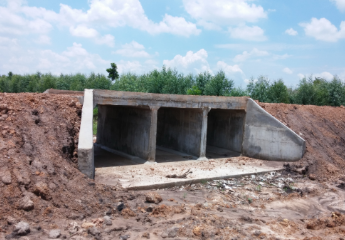🗂️ Download Now
Please fill out the Download Section below the Comment Section to download the Guide for modeling a simple arch bridge.
Bridges come in various forms; among them, Arch Bridges↗ are known for their beautiful aesthetics and excellent safety. In the previous content (click↗), we introduced the design considerations related to Arch Bridges and various examples of constructed Arch Bridges.
Today, we will discuss a method to simplify the generation of structural analysis models required for Arch Bridge design, building on the previous content. This content is based on the webinar "The Synergy between MIDAS CIVIL and MIDAS FEA NX," which was held internationally on May 3rd. If you are interested in the details of creating global structural analysis models and detailed analysis models for Arch Bridges, please follow the link below to access the webinar.
1. Overview
When designing structures, there are various types of structural analysis models required. However, the essential models can be summarized as follows:
1) Global Analysis Model
2) Detailed Analysis Model
The global analysis model is used to analyze the behavior of the entire structure. Typically, for bridges, a 1D beam (frame) element, as shown in Figure 1, is used to analyze forces, moments, and deformations.
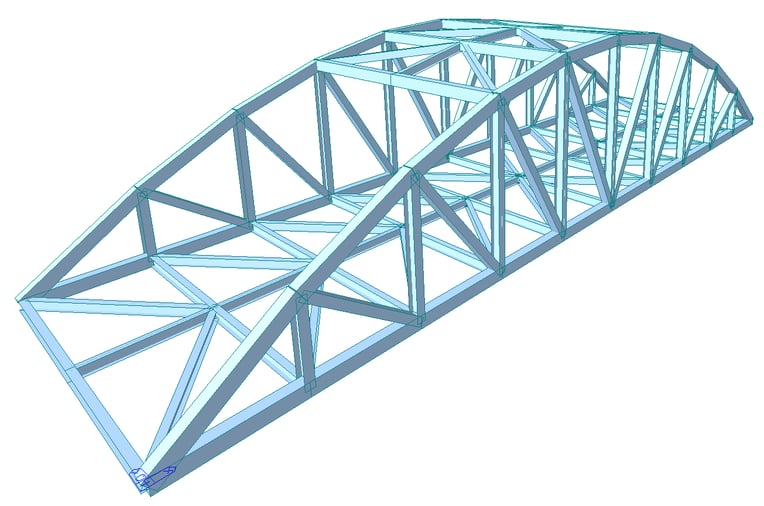 Figure 1. Arch bridge model using 1D beam elements in MIDAS CIVIL
Figure 1. Arch bridge model using 1D beam elements in MIDAS CIVIL
On the other hand, the detailed analysis model is focused on specific locations where loads are concentrated, such as joints and connections.
To examine stress distributions more accurately, 2D plate elements or 3D solid elements, as shown in Figure 2, are employed.
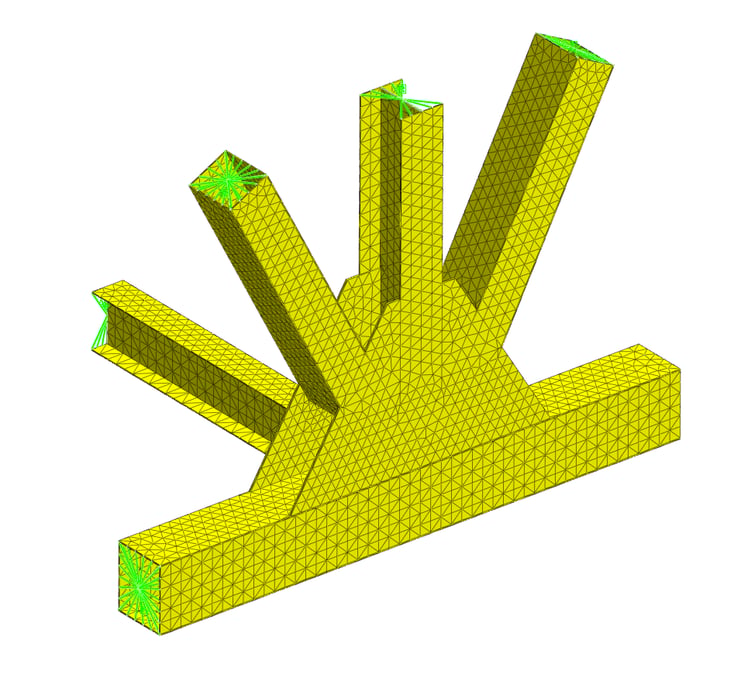 Figure 2. Detailed joint model of an arch bridge using 3D solid elements in FEA NX
Figure 2. Detailed joint model of an arch bridge using 3D solid elements in FEA NX
These two types of modeling, for global and detailed analysis, have differences in the elements used and the modeling scope. Consequently, practitioners often face difficulties in performing separate modeling for each analysis.
If it is possible to create a detailed analysis model based on the global analysis model, it can greatly enhance work efficiency.
2. Global Analysis Model
The global analysis model of an arch bridge can be conveniently created using the Arch Wizard provided in MIDAS CIVIL.
Firstly, the key dimensions of the arch bridge used in the modeling are its height, width, and length, as shown in Figure 3.
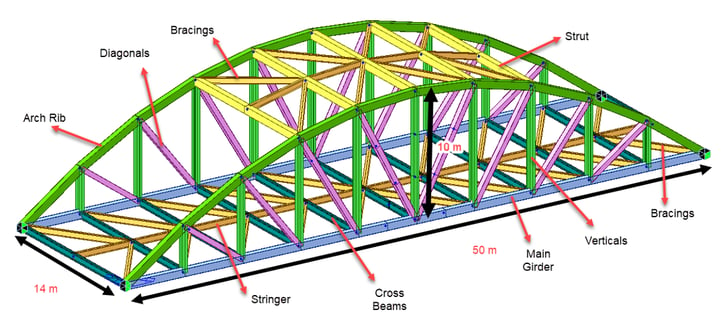 Figure 3. Key dimensions and nomenclature of an arch bridge
Figure 3. Key dimensions and nomenclature of an arch bridge
The process of modeling using the Arch Wizard in MIDAS CIVIL can be observed in Video 1.
Video 1. Modeling of an arch bridge using the Arch Wizard for 1D beam elements
By utilizing the Wizard feature for modeling the arch section, which is the most time-consuming part of arch bridge modeling, the process can be completed more easily and efficiently.
3. Detailed Analysis Model for Junctions
Modeling the junctions of an arch bridge can be a challenging task when using 3D solid elements due to the diagonal members installed in multiple directions. It requires a careful coordinate setup to consider the orientation of each member. However, by utilizing the "Frame to Solid" feature in MIDAS CIVIL and linking the global analysis model to FEA NX, the modeling process can be made somewhat easier as the modeling takes into account the direction of each member. While the modeling of localized components such as gusset plates that cannot be fully considered in the global analysis needs to be done separately, significant time can be saved compared to directly starting with 3D solid element modeling.
The process of linking the global analysis model from MIDAS CIVIL to FEA NX using the "Frame to Solid" feature can be seen in Video 2.
Video 2: Modeling of an arch bridge using the "Frame to Solid" feature in MIDAS CIVIL
The resulting junction model can then undergo a 3D finite element analysis using FEA NX to examine stress and deformation.
When conducting a detailed analysis of a specific part within the global analysis model, careful consideration of boundary conditions and applied loads is crucial. Typically, the analysis is performed in MIDAS CIVIL by importing the load values or displacement values at the desired location. However, since the 3D solid elements generated in FEA NX can be imported into MIDAS CIVIL, it is also possible to include the detailed analysis within the global analysis model, as shown in Figure 4.
In this case, there is no need to separately consider boundaries and loads for the detailed analysis model, allowing for a more convenient and integrated analysis.
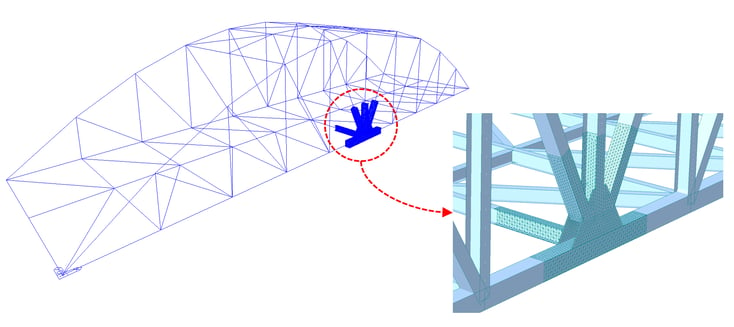
4. Conclusion
The process of creating geometric shapes using 2D drawings for detailed analysis using 3D solid elements is a time-consuming and error-prone task that requires careful verification of the consistency and correlation with the global analysis model. In particular, constructing the geometric shape in 3D solid element-based finite element analysis is one of the most time-consuming tasks, especially for structures with complex shapes or slopes, requiring even more time.
By using MIDAS CIVIL and FEA NX together, it becomes easier to generate the modeling for detailed analysis of specific parts within the global analysis model. This saves time that would otherwise be spent on verifying the consistency and correlation with a separate global analysis model.
While the content shown today focused on modeling an arch bridge, the same approach can be applied to other structures such as jacket structures, monopile structures, plant structures, and various types of steel bridge junction modeling using 1D beam elements for analysis.
Try utilizing the "Frame to Solid" feature provided by MIDAS CIVIL to perform detailed analysis modeling of complex junctions in FEA NX.
 Get Started midas Civil
Get Started midas Civil
 Featured blog of this week
Featured blog of this week










